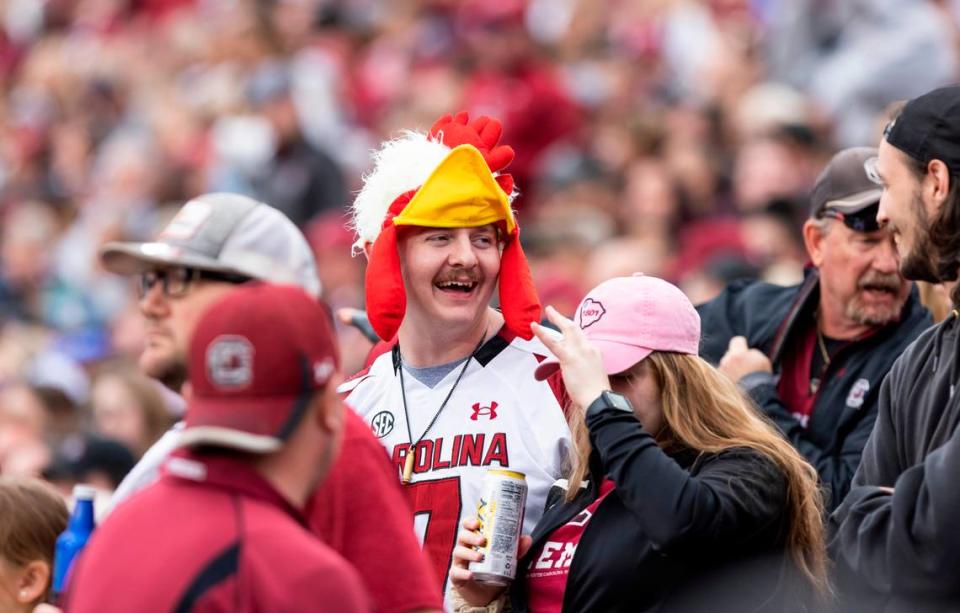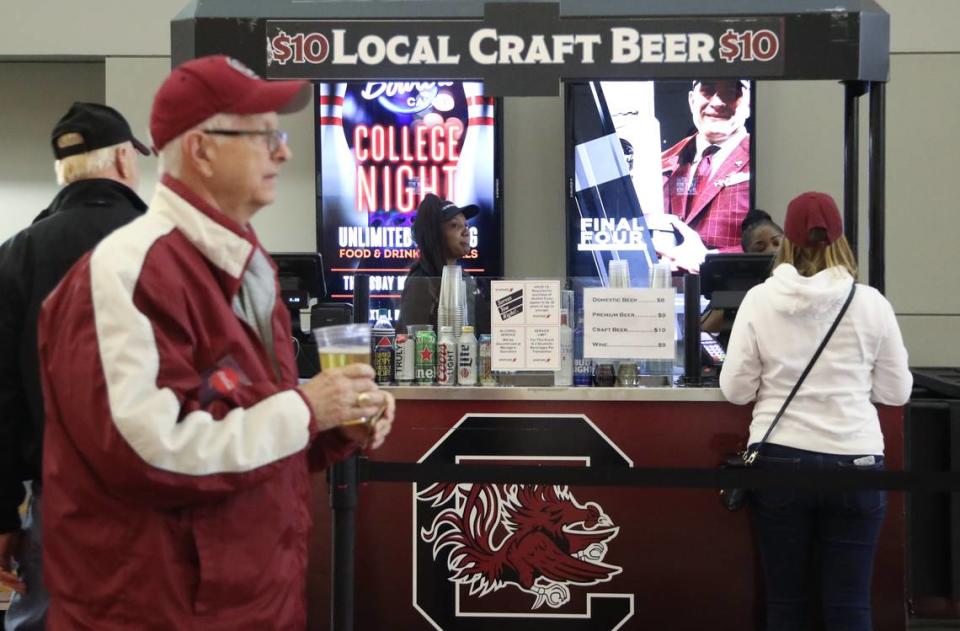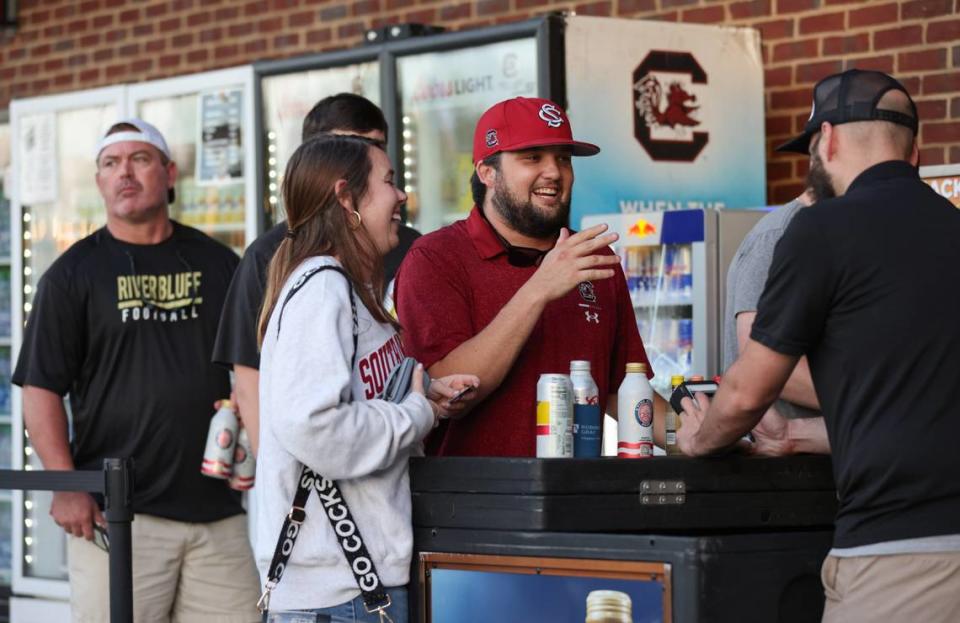How much money does South Carolina athletics make from selling alcohol?
It seems so silly in retrospect.
Like, really? That’s how things used to be. You could puff on a Marlboro at 35,000 feet? You couldn’t go to a new restaurant without printing out directions or squinting at a map? You couldn’t watch a live college football game while sipping on a beer?
For years and years on Saturdays in the South, fans used to be able to consume as much alcohol as they wanted so long as they hadn’t entered through stadium gates. The tailgates were full of keg stands, Jello shots and every drinking game under the sun. But the stadium was a palace of purity.
No beer. No wine. No alcohol.
It feels like a century ago.
In reality, it was just over five years ago that the Southeastern Conference lifted its ban on schools selling beer, wine and liquor in their sporting venues.
With the House Settlement and direct athlete payments looming, athletic departments are scouring for any source of revenue. Sooner than later, it’s likely a majority of college football teams not only have corporate logos on their field, but their jerseys, too.
Anything to add a little bit of money.
Which makes it wild to think that, by not selling alcohol for decades, college athletic departments were leaving easy money on the table. Even when the SEC allowed alcohol sales in 2019, South Carolina sat out the first year, wanting to see how other schools adjusted first.
They initially began selling beer and alcohol at baseball games the following spring, but the Gamecocks only played 13 home games at Founders Park before the COVID-19 pandemic struck and canceled everything.
Though beer and alcohol had long been available in premium seating areas at SEC venues, it wasn’t first introduced to the main concourses of Williams-Brice Stadium until the 2020 football season, which still included limited crowds.
Since then, though, South Carolina has sold more and more alcohol each season at every venue. Here are the alcohol sales numbers from 2021-2023 at South Carolina’s sporting venues, according to information obtained by The State via public records request.
Note: At the time of The State’s request, 2024 baseball and softball seasons were still ongoing, so those final numbers were not available.

WILLIAMS-BRICE STADIUM
2021 (doesn’t include spring game): $1,560,153.52 ... $111,446.41 via liquor sales
2022: $2,827,366.90 ... $180,520.01 via liquor sales
2023: $3,019,307.53 // $250,363.25 via liquor sales

COLONIAL LIFE ARENA
Includes non-athletic events such as concerts
2021-22 season: $126,051.01 ... $11,632.01 via liquor sales
2022-23 season: $1,169,986.70 ... $108,171.37 via liquor sales
2023-24 season: $1,731,657.55 ... $130,250.65 via liquor sales

FOUNDERS PARK
Beer and wine sales only
2021: $291,890.92
2022: $409,622.47
2023: $923,812.88
CAROLINA SOFTBALL STADIUM
Beer and wine sales only
2021: N/A
2022: N/A
2023: $27,828.00
STONE STADIUM (soccer)
Beer and wine sales only
2021: N/A
2022: $13,384.50
2023: $18,991.00
Explaining USC alcohol trends
The massive increase from 2021 to 2022 , USC’s executive associate AD for administration Chris Rogers said, is due to South Carolina increasing its pricing on alcohol, mostly raising the beer prices.
“Honestly, we’re at a spot where, incrementally, there are increases that occur just based on the costs of getting goods,” Rogers told The State.
Another factor, he said, is South Carolina and its concessionaire, Aramark, working to increase the points of sale (or the number of places where alcohol can be purchased) at the Gamecocks’ stadiums and arenas.
In 2021, Rogers noted, South Carolina had around 200 to 250 points of sale across Williams-Brice Stadium. Heading into the 2024 season, that number will be closer to 400-450.
“That’s not just a beer thing,” Rogers said. “That’s across the board. You’re just trying to create more points of sale. And that doesn’t mean there’s necessarily more vendors. But it may mean if you go to Stand X, where there used to be four registers, now there’s eight registers and you can hopefully get people through faster.”
Still, lines can mount on Saturdays at Williams-Brice Stadium.
Some of that is due to the infrastructure of the venue, which doesn’t give Rogers’ team or Aramark a ton of room to add new concession stands or portable stands. Some of it is due to staffing shortages, a problem that extends well past South Carolina and college athletics. It doesn’t help that the SEC doesn’t allow hawkers to roam up and down aisles selling anything, let alone beer.
“Speed of service is probably the No. 1 thing fans are looking for from a concessions perspective,” Rogers said.
“Do you look at how you’re routing your lines? Do you look at the locations of where those points of sale are? Do you look at what are the items in Stand A vs Stand B and maybe if you separate them you can be more efficient by moving one of them? All of those sorts of things you’re looking at.”

 Yahoo Sports
Yahoo Sports 
